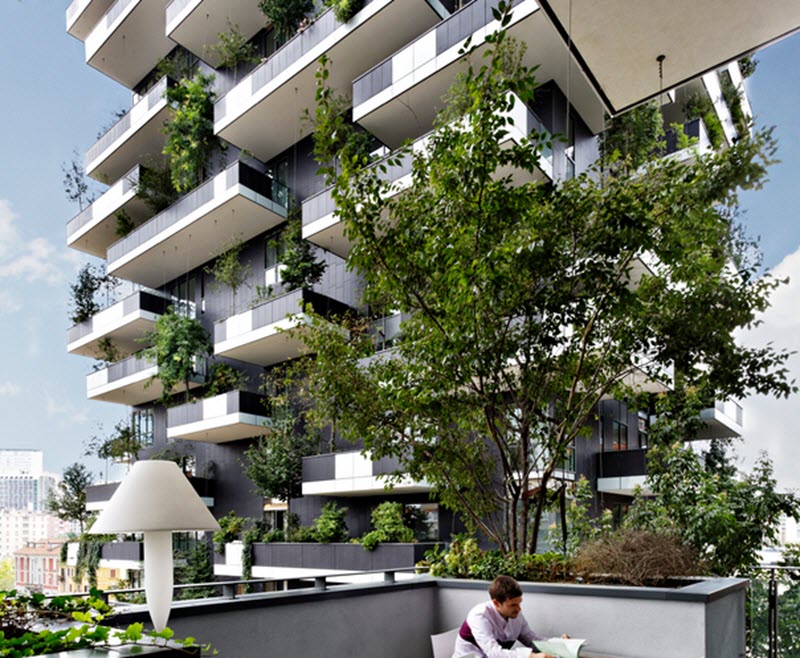Contents
Bosco Verticale, or Vertical Forest, stands as a beacon of sustainable living and green architecture in the heart of Milan, Italy. These residential towers, ensconced with verdant greenery, symbolize the harmonious integration of nature into urban environments. This article delves into the concept, construction, and significance of Bosco Verticale.
Conception and Design
The Genesis of an Idea
Designed by the renowned Italian architect Stefano Boeri, Bosco Verticale was conceived as a response to the increasing urbanization and the resultant loss of green spaces. Boeri envisioned a building that would contribute positively to the urban ecosystem by integrating substantial greenery, reducing air pollution and enhancing biodiversity.
Architectural Marvel
Bosco Verticale consists of two residential towers, one standing at 111 meters and the other at 76 meters. These towers in the Porta Nuova district of Milan are adorned with over 20,000 plants, including trees, shrubs, and perennials, distributed across the terraces and facade. The design of the towers ensures that every unit has its own balcony with an array of greenery, providing residents with an intimate connection to nature within the cityscape.
Construction and Features
Structural Challenges
Building Bosco Verticale was not without challenges. Given the sheer weight of the trees and plants, the building needed to be structurally sound to bear the load. The architects and engineers collaborated to design an innovative irrigation system that reuses greywater and reduces water consumption. Wind resistance was another consideration, as the trees had to be anchored securely to withstand high-speed winds at the upper levels.
Botanical Considerations
Selecting the right species of trees and plants was crucial. The botanical project was led by botanist Laura Gatti, who collaborated with Boeri. They chose a mix of deciduous trees, evergreens, and flowering plants that would thrive in the local climate and provide a lush, ever-changing facade throughout the seasons.
Environmental and Social Impact
Combating Urban Pollution
One of the main benefits of Bosco Verticale is its role in mitigating air pollution. The trees and plants absorb carbon dioxide and other pollutants while releasing oxygen. It is estimated that the two towers have the capability to convert approximately 44,000 pounds of carbon dioxide to oxygen annually.
Enhancing Biodiversity
Bosco Verticale is not just about aesthetics; it’s also a sanctuary for biodiversity. The trees and shrubs create habitats for birds, insects, and small animals. This contributes to a richer urban ecosystem, with the towers functioning as vertical forests.
Psychological and Social Well-being
The residents of Bosco Verticale enjoy the psychological benefits of being close to nature. The greenery provides a tranquil environment that helps reduce stress and improve mental well-being. Additionally, the project has contributed to social upliftment by setting a precedent for sustainable urban living and inspiring similar projects worldwide.
Bosco Verticale: A Paradigm Shift in Urban Living
As cities continue to expand, finding ways to incorporate green spaces becomes imperative. Bosco Verticale signifies an architectural achievement and a paradigm shift in urban planning and living. It reimagines the role of nature in our lives, showing that it’s possible to live harmoniously with the environment even in densely populated urban settings.

